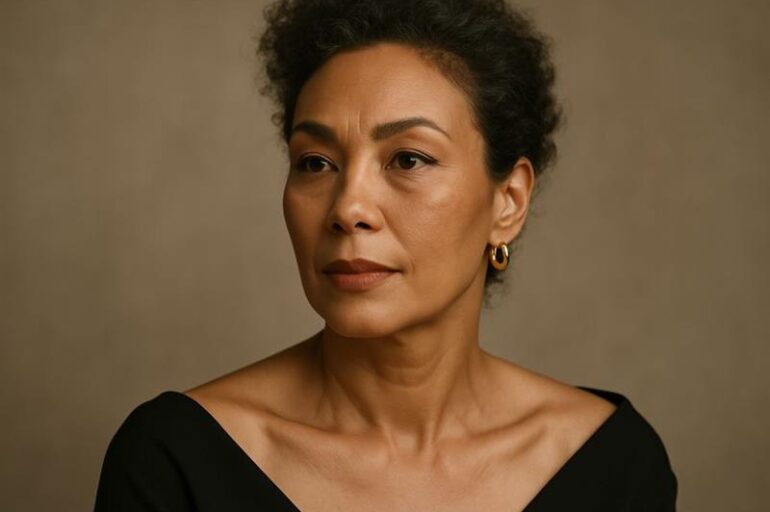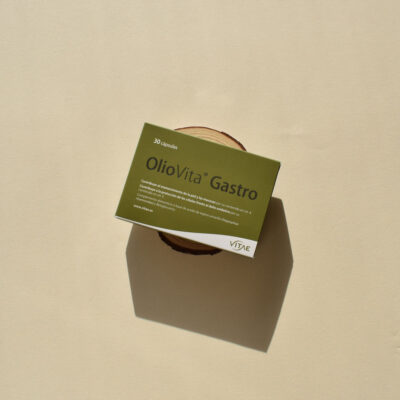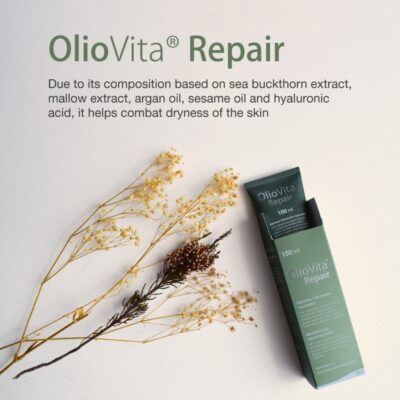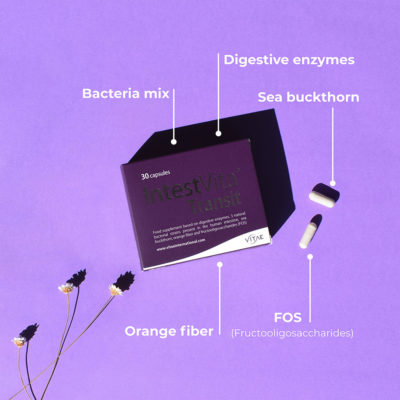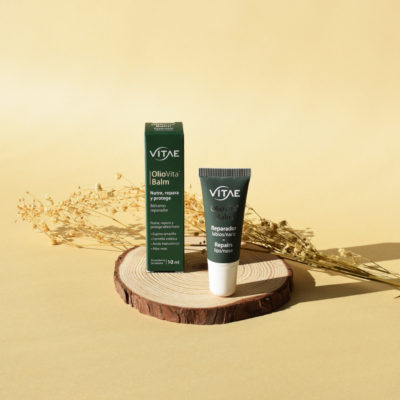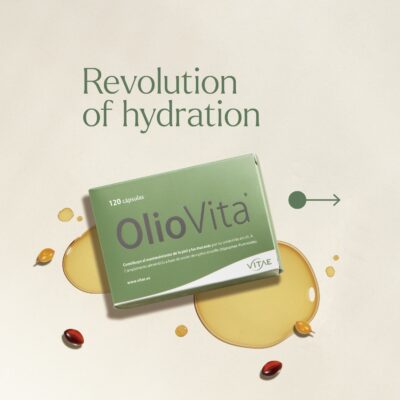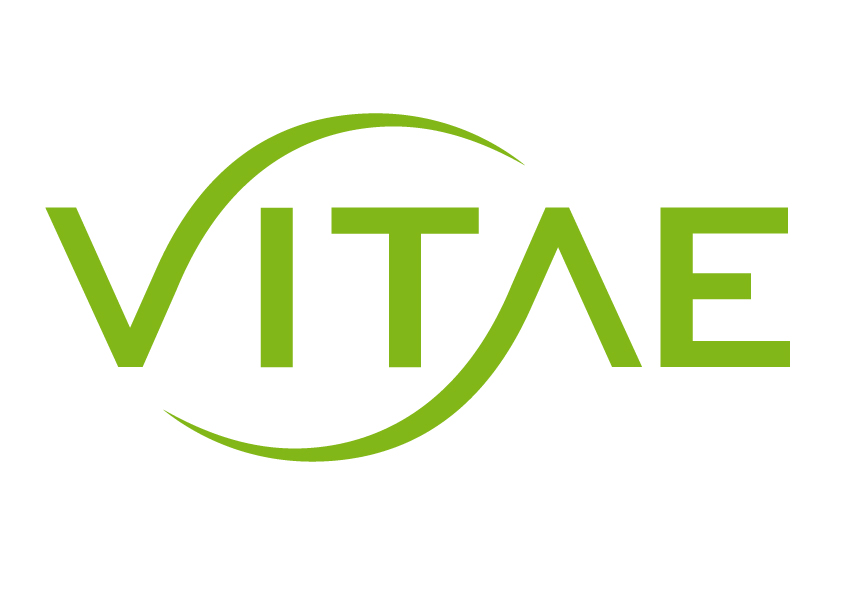“Skin aging” is one of the most frequently searched topics in the field of beauty and dermatological care in Spain. The skin, as the largest organ of the human body, is also the one that most quickly reveals the passage of time. Fortunately, advances in dermatology, cosmetic science, and especially anti-aging nutricosmetics now offer effective tools—such as sea buckthorn oil rich in omega-7, and even its capsule form OlioVita®—to understand, slow down, and partly reverse the aging process of the skin.
In this article, we explore in depth what skin aging is, its internal and external causes, how it manifests over time, and what solutions are offered by aesthetic medicine, dermopharmacy, and a healthy lifestyle.
What is skin aging?
Skin aging is a progressive biological process that affects the skin’s main layers: the epidermis, dermis, and hypodermis. It results in structural, functional, and aesthetic changes. Although it is a natural phenomenon, the speed and intensity of its progression vary greatly between individuals, depending on genetics, environment, and lifestyle.
The main visible signs of aging include:
-
Appearance of wrinkles and fine lines
-
Loss of firmness and volume
-
Sagging and skin laxity
-
Changes in skin texture and tone
-
Dark spots, sun lentigines, and keratosis
-
Very dry skin (xerosis), roughness, and loss of radiance
Types of skin aging
Skin aging can be classified into two main types, which often coexist and reinforce each other.
Intrinsic or chronological aging
This is natural aging, determined by age and genetics. Even in people with healthy lifestyles and minimal sun exposure, the body begins to produce about 1% less collagen each year starting around the age of 25. This decline accelerates with menopause or andropause.
Its most common effects include:
-
Progressive thinning of the epidermis
-
Reduction in the skin’s natural hydration
-
Decreased collagen and elastin production
-
Lower regeneration and healing capacity
Extrinsic aging or photoaging
This type of aging is caused by environmental factors, with the sun being the main culprit. Prolonged exposure to ultraviolet radiation accelerates the breakdown of structural fibers in the skin. Other contributing factors include smoking, pollution, stress, alcohol, poor diet, and lack of restorative sleep. Unlike chronological aging, photoaging is highly preventable.
Common signs include:
-
Deep wrinkles in sun-exposed areas such as the face, neck, chest, and hands
-
Pigment spots (sun lentigines)
-
Precancerous lesions such as actinic keratosis
-
Thickened, yellowish skin with loss of elasticity (elastosis)
-
Dull complexion and rough texture
It’s worth noting that a randomized clinical trial demonstrated that daily use of sunscreen helps delay skin aging.
Factors that accelerate skin aging
There are many factors that contribute to premature skin aging. Many of them are avoidable or modifiable, making prevention a key pillar of dermatological care.
Sun exposure (UV radiation)
Between 80% and 90% of visible aging is directly related to ultraviolet (UV) radiation. UVA rays penetrate the deepest layers of the dermis, breaking down collagen and elastin fibers. Meanwhile, UVB rays affect the outermost layers, causing sunburn, cellular damage, and increasing the risk of skin cancer.
Smoking
Every puff of a cigarette releases thousands of free radicals into the skin. These molecules reduce oxygen supply to tissues, destroy structural proteins, and significantly accelerate the loss of skin radiance and firmness. Smoking is one of the most aggressive extrinsic factors for collagen degradation.
Environmental pollution
Airborne microparticles, ozone, and other urban pollutants settle on the skin and penetrate the epidermis. This contact promotes chronic inflammation, oxidative stress, and pigmentation disorders. Antioxidant polyphenols help counteract this effect.
Unhealthy, unbalanced diet
Diets high in refined sugars, saturated fats, and low in antioxidant vitamins like A, C, D, and E speed up the deterioration of skin cells. Poor nutrition deprives the skin of the necessary resources to repair daily damage.
Lack of restorative sleep
Deep sleep is when cellular regeneration is activated. Inadequate or poor-quality sleep hinders skin DNA repair and decreases melatonin production—one of the body’s most powerful natural antioxidants.
Chronic stress
Excess cortisol associated with prolonged stress disrupts the skin’s barrier function, promotes subclinical inflammation, and weakens its defenses against external aggressors. It can also worsen conditions like acne, dermatitis, or rosacea.
How does skin aging manifest?
Skin aging begins quietly around the age of 25. Although the initial changes are subtle, they become more noticeable over time, affecting not just the surface but also the internal structure of the skin.
Visible signs of aging go beyond wrinkles. They include loss of elasticity, volume, density, and radiance, as well as uneven tone and texture.
Signs of aging by decade
Discover how sea buckthorn omega-7 helps restore firmness
From age 25
-
First expression lines, especially on the forehead and around the eyes
-
Gradual collagen loss (about 1% per year)
-
Decreased natural radiance
-
Dull or tired appearance
From age 35
-
More visible wrinkles at rest and in motion
-
Gradual loss of firmness
-
Decreased endogenous hyaluronic acid production
-
Uneven pigmentation, especially after accumulated sun exposure
From age 45–50
(especially in postmenopausal women)
-
Sagging in the jawline, neck, and lower face
-
Deep folds such as nasolabial lines or “barcode” wrinkles above the lips
-
Generalized laxity and loss of facial volume
-
Increased sunspots and lentigines
From age 60
-
Noticeably thinner, more fragile, and translucent skin
-
Pronounced dryness and tendency toward xerosis
-
Appearance of dilated capillaries and spontaneous bruising
-
Slower wound healing
-
Actinic keratosis and other precancerous lesions
Changes in the layers of the skin
To understand how skin aging occurs, it’s essential to know the transformations that take place in the different layers over time. Structural and functional deterioration doesn’t just affect the surface—it compromises the integrity of the entire skin tissue.
Epidermis
-
Slower cell renewal, leading to delayed skin regeneration
-
Reduced production of essential lipids, weakening the skin barrier
-
Increased sensitivity to irritants and UV radiation
-
Compromised barrier function and increased transepidermal water loss
Dermis
-
Reduced synthesis of collagen types I and III, essential for firmness
-
Elastin degradation, affecting tissue elasticity
-
Gradual loss of fibroblasts and blood vessels
-
Dermal structure becomes less cohesive, facilitating wrinkles, sagging, and loss of density
Hypodermis (subcutaneous layer)
-
Decrease in number and volume of adipocytes, resulting in hollowed cheeks and sagging
-
Reduced thermal insulation and mechanical protection
-
Decline in cellular energy reserves and regenerative capacity
How do skin type and ethnicity influence aging?
Aging doesn’t affect all skin types equally. Factors like phototype, dermal density, genetics, and natural antioxidant capacity influence the speed, severity, and characteristics of the aging process.
Fair skin (phototypes I–II)
People with fair skin, light eyes, and blond or red hair have low levels of melanin, offering less natural protection against sun damage. They tend to age earlier, with fine lines, pigmentation spots, and greater sensitivity to environmental aggressors.
Mediterranean and Latin skin (phototypes III–IV)
These skin types have higher melanin concentrations, offering better defense against UV radiation. While photoaging appears later, these individuals often experience sagging, facial laxity, and pigmentation issues more frequently.
Asian skin
Asian skin has a denser, more compact structure, delaying the appearance of wrinkles. However, it is prone to uneven tone, melasma, and loss of radiance. It’s also more reactive, requiring formulas that minimize irritation.
Dark skin (phototypes V–VI)
Thanks to their high melanin content, these skin types have superior natural protection from sun damage and tend to develop wrinkles later. However, they are more susceptible to post-inflammatory hyperpigmentation and dryness, requiring deep and sustained hydration.
Understanding these differences allows for personalized anti-aging treatments, selecting ingredients, textures, and routines tailored to the specific needs of each skin type and phototype.
How does men’s skin age compared to women’s?
Although skin aging affects both men and women, hormonal, structural, and functional differences determine a distinct evolution in each sex — both in the form and timing of visible signs.
Male aging: key characteristics
-
Thicker dermis: Male skin is up to 25% thicker than female skin, providing higher collagen density and initial resistance to wrinkles.
-
Higher sebum production: In youth, men have more intense sebaceous secretion, which protects against dehydration. However, this also leads to a higher tendency toward enlarged pores and acne.
-
Later but deeper wrinkles: Wrinkles tend to appear later than in women but are usually deeper, especially on the forehead, between the eyebrows, and around the eyes.
-
Less preventive care: Men generally adopt skincare routines later in life, which can enhance visible aging signs.
Female aging: particularities
-
Significant hormonal impact: Menopause triggers a sharp drop in estrogen, accelerating the loss of collagen, elasticity, and hydration — resulting in more fragile, thinner skin prone to sagging.
-
Earlier fine lines: Women often show aging signs earlier, especially expression lines around the eyes and mouth.
-
Greater care and prevention: Aesthetic concerns and the early use of specific cosmetics, sunscreens, and anti-aging treatments help visibly mitigate the effects of aging.
The role of free radicals in skin aging
Free radicals are unstable molecules generated as byproducts of cellular metabolism or due to external exposure. In excess, they cause oxidative stress — one of the main mechanisms behind premature aging.
Effects of oxidative stress on the skin
-
DNA damage in skin cells
-
Breakdown of collagen and elastin
-
Disruption of lipids and cellular membranes
-
Increased skin inflammation
Factors that worsen oxidative stress
-
UV radiation (UVA and UVB)
-
Air pollution
-
Diets low in antioxidants
-
Tobacco and alcohol use
-
Chronic stress and poor sleep
Strategies to neutralize free radicals
The body has natural antioxidant defenses, but their effectiveness declines over time. To boost this barrier, it’s recommended to follow a diet rich in:
-
Antioxidant vitamins such as A, E, and especially C
-
Polyphenols from green tea, pomegranate, and grapes
-
Carotenoids like beta-carotene from tomatoes or carrots
-
Essential minerals such as selenium and zinc
-
Coenzyme Q10 and Licochalcone A, used in cosmetic treatments
Skin microbiota: the invisible defense against aging
The skin is not only a physical barrier but also hosts a complex community of beneficial microorganisms called the skin microbiota, which plays a crucial role in maintaining youthful, healthy skin.
Key functions of the microbiota
-
Protection against pathogens: Inhibits colonization by harmful microorganisms and prevents infection and inflammation
-
Regulation of pH and skin barrier: Helps maintain an optimal acidic environment for the epidermis
-
Immune modulation: Triggers natural defense mechanisms and reduces chronic inflammation
Microbiota and aging
As we age, microbial balance is disrupted. Factors such as pollution, overuse of harsh cosmetics, topical antibiotics, or chronic stress can lead to skin dysbiosis, resulting in:
-
Increased chronic low-grade inflammation (inflammaging)
-
Weakened skin barrier and heightened sensitivity
-
Reduced natural hydration
-
Greater risk of dermatological conditions
How to protect the skin microbiota
-
Use gentle cleansers, free from sulfates and alcohol
-
Avoid frequent or aggressive exfoliation
-
Incorporate products with prebiotics, probiotics, or postbiotics
-
Eat a fiber-rich, antioxidant-rich diet to support a balanced microbiome
Menopause and skin aging
Menopause is a critical stage in the evolution of female skin. Hormonal changes have a visible impact on its structure and appearance.
Hormonal changes and skin consequences
The drop in estrogen and progesterone directly affects the production of collagen, elastin, and hyaluronic acid. In the first five years after menopause, skin can lose up to 30% of its density.
Main effects include:
-
Thinning of the dermis
-
Accelerated collagen degradation
-
Deeper wrinkles and sagging
-
Increased dryness and facial volume loss
-
More pronounced sun spots in exposed areas
Skincare recommendations during menopause
A tailored routine and specific products can help manage skin changes:
-
Soy isoflavones: Natural phytoestrogens that mimic hormonal effects
-
Hyaluronic acid: A powerful hydrator that improves elasticity
-
Retinoids: Promote cell renewal and stimulate collagen
-
Niacinamide and peptides: Strengthen dermal structure and calm inflammation
-
Ceramides: Restore the skin barrier and prevent water loss
Supporting skincare with adequate oral hydration, a diet rich in omega-3s and antioxidants, and consulting a healthcare professional about additional therapies (like sea buckthorn supplements) can make a noticeable difference in skin health and youth.
Expert tip: How to face aging during menopause
Menopause does not mean inevitable or accelerated aging. With a holistic approach — combining specific skincare, a balanced diet, moderate physical activity, and hormonal control when needed — it’s possible to maintain radiance, elasticity, and resilience during this stage. A proactive, personalized skincare routine can significantly improve skin quality and overall well-being.
Photoaging: the impact of sun exposure on skin aging
Sun exposure is by far the leading external factor in premature skin aging. Up to 90% of visible signs of aging are related to solar radiation. This process is called photoaging, and it has clinical characteristics distinct from chronological aging.
Signs of photoaging
-
Pigment spots: Sun spots and melasma on the face, chest, and hands
-
Solar elastosis: Yellowish skin tone, rough texture, and significant loss of elasticity
-
Persistent dehydration: Impaired skin barrier and water loss
-
Thickened skin: Coarse texture, especially on cheeks and forehead
-
Precancerous lesions: Such as actinic keratosis, which increases the risk of skin cancer
Cumulative, irreversible sun damage
Unlike other aging factors that can be reversed or improved, UV-induced damage is cumulative and often permanent. Prevention — including oral sun protection supplements — is the most effective strategy and should start early in life.
Daily sunscreen use, moderate sun exposure, and strengthening the skin’s internal antioxidant defense are key pillars to preserve youthful skin long-term.
Differences between chronological aging and photoaging
| Feature | Chronological Aging | Photoaging |
|---|---|---|
| Affected areas | Non-exposed zones (e.g., inner arms) | Exposed areas (face, chest, hands) |
| Skin tone | Even | Uneven, with hyperpigmentation |
| Texture | Smooth and fine | Rough, thickened |
| Wrinkles | Fine, superficial | Deep and marked |
| Spots | Rare | Sun spots, melasma |
| Elasticity | Gradually decreases | More pronounced loss |
| Cancer risk | Low | High (actinic keratosis, carcinoma) |
| Main cause | Time and genetics | UV radiation and environmental factors |
| Onset | From ages 25–30 | Can start in childhood without protection |
| Prevention | General skincare, hydration | Daily sun protection, topical antioxidants |

